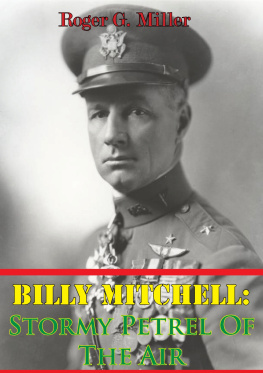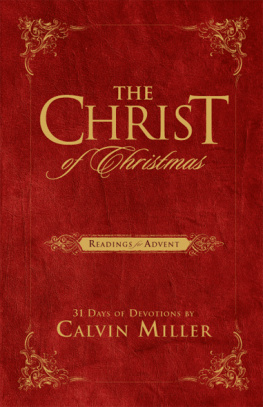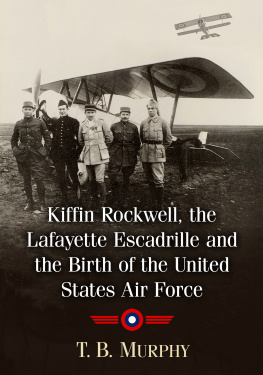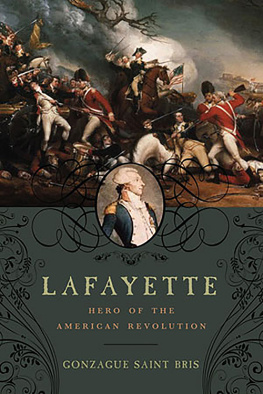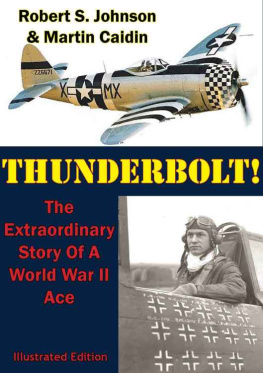This edition is published by PICKLE PARTNERS PUBLISHINGwww.picklepartnerspublishing.com
To join our mailing list for new titles or for issues with our books picklepublishing@gmail.com
Or on Facebook
Text originally published in 2007 under the same title.
Pickle Partners Publishing 2015, all rights reserved. No part of this publication may be reproduced, stored in a retrieval system or transmitted by any means, electrical, mechanical or otherwise without the written permission of the copyright holder.
Publishers Note
Although in most cases we have retained the Authors original spelling and grammar to authentically reproduce the work of the Author and the original intent of such material, some additional notes and clarifications have been added for the modern readers benefit.
We have also made every effort to include all maps and illustrations of the original edition the limitations of formatting do not allow of including larger maps, we will upload as many of these maps as possible.
LIKE A THUNDERBOLT The Lafayette Escadrille and the Advent of American Pursuit in World War I
Roger G. Miller
Except where individually credited, all photos are courtesy of the National Museum of the U.S. Air Force, Wright-Patterson AFB, Ohio.
The maps are from Hat in the Ring: The Birth of American Air Power in the Great War (Washington, D.C.: Smithsonian Institution Press, 2003), with special permission from the author, Bert Frandsen, Command & General Staff College, Maxwell AFB, Alabama.
TABLE OF CONTENTS
Contents
The Eagle
He clasps the crag with crooked hands;
Close to the sun in lonely lands,
Ring'd with the azure world, he stands.
The wrinkled sea beneath him crawls;
He watches from his mountain walls,
And like a thunderbolt he falls.
Alfred, Lord Tennyson
Acknowledgments
As usual, numerous individuals provided exceptional support. Friend and colleague, Daniel Harrington, Air Combat Command History Office, Langley AFB, Virginia, reviewed the manuscript based on his knowledge of the Lafayette Escadrille, the Lafayette Flying Corps, and French spelling. Douglas Lantry, National Museum of the U.S. Air Force, Dayton, Ohio, collected documents on the 103rd Aero Squadron and photographs of the Escadrille. Bert Frandsen, Command & General Staff College, Maxwell AFB, Alabama, an authority on the 1st Pursuit Group, gave me the benefit of his extensive known edge. In the Air Force Historical Studies Office, our historical research staff, Yvonne Kinkaid and Terry Kiss, provide abundant support; George Watson, Pati Wilson, and John C. Sullivan reviewed the manuscript while David Chenoweth waved his magic editorial wand. Mary Lee Jefferson found the title in the poem at left.
The errors that remain are mine.
Roger G. Miller, Ph.D.
Air Force Historical Studies Office
Bolling AFB, DC.
Figure - Gervais Raoul Lufbery (USAF Photo)
On the morning of May 18, 1916, a German LVG appeared in the sky over Thann in the Vosges region, near the ancient French city of Nancy. The LVG was a well-armed, two-seat observation airplane and the Vosges a quiet sector of the Western Front, in stark contrast to the merciless slaughter taking place to the north at Verdun. Normally the two airmen could expect to do their reconnaissance with little interruption, but on this day they had left luck behind. A speck appeared in the sky to the west and rapidly grew into an enemy pursuit aircraft, an avion de chasse, an agile, single-seat Nieuport. The Germans, busy at their trade, failed to see the enemy draw near. A veteran hunter or more cautious pilot might have seized the opportunity to surprise the LVG and launch an attack out of the sun or from behind a cloud, but this one approached directly, without guile. Suddenly aware of the danger, the observer seized his machine gun and began firing while the pilot turned the airplane toward the safety of the German lines. The chasse pilot closed to point blank range and, just as a collision appeared imminent, fired a quick burst, then swerved away. The encounter was over that quickly. Both the observer and pilot collapsed; the LVG rolled and plunged to earth; the Nieuport banked away leaving a plume of smoke to mark the scene of combat.
French troops witnessed the brief fight and by the time the Nieuport reached its field at Luxeuil-les-Bains had confirmed the kill. It was an auspicious event. Everything about the victorious aircraft said France except the pilots name. Kiffen Yates Rockwell was an American citizen assigned to Escadrille N 124, known unofficially as IEscadrille Americaine, and his victory was the units first. It was quick and impressive by contemporary standards of air combat. Rockwell had engaged at incredibly close range, almost sticking his gun into the enemy cockpit, but his daring attack allowed the LVGs observer to put a hole in the Nieuports top wing main spar. Rockwell, in turn, killed the two men with only four bullets, a marvelous feat of marksmanship. Cheering comrades lifted him from the cockpit and began a wild celebration. A tradition began with N 124s first victory. Rockwells brother Paul, serving elsewhere in the French Army, provided a bottle of eighty-year-old bourbon. Kiffen Rockwell took the first drink, but the Escadrille set aside the rest. From then on, credit for downing an enemy aircraft earned the victorious pilot a shot from The Bottle of Death.
Introduction
The advent of an American squadron, or escadrille, within the French air force, the Service Aeronautique, had been far from a simple process. French leaders initially held the belief, common at the time, that the war begun in 1914 would be a short one. The potential value of American volunteers fighting for France both for propaganda purposes and for helping bring the power of the New World into the war on the side of the Allies was thus irrelevant at first. By early 1915, however, the French began to accept American volunteers and assign them to escadrilles. In early 1916, the Service Aeronautique united several of these men in an elite chasse unit, which quickly earned an enviable reputation for audacity, bravery, and lan.
Success of this unit, the Lafayette Escadrille, had three consequences. First, its existence encouraged a large number of Americans, far more than needed in one escadrille, to volunteer for French aviation. These individuals, identified unofficially as members of a Lafayette Flying Corps, served in numerous French air units. Second, the publicity surrounding the Lafayette Escadrille contributed favorable press for the Allied cause, strengthened ties between France and the U.S., and ultimately helped prepare the U.S. to participate on the Allied side of the conflict. Third, the existence of a large body of experienced American pilots provided combat veterans for the Air Service of the American Expeditionary Forces (AEF) in France when the U.S. ultimately entered the war. These veterans helped instill in the U.S. Air Service the attitudes and practices of the Service Aeronautique, an infusion especially reflected in two U.S. pursuit squadrons, the 103rd Aero Squadron, made up of Lafayette Escadrille pilots, and the 94th Aero Squadron, the most famous American combat squadron of the war. Further, this body of veterans influenced all U.S. pursuit units as Lafayette personnel spread throughout the Air Service.

![Roger G. Miller Like A Thunderbolt: The Lafayette Escadrille And The Advent Of American Pursuit In World War I [Illustrated Edition]](/uploads/posts/book/291189/thumbs/roger-g-miller-like-a-thunderbolt-the-lafayette.jpg)
